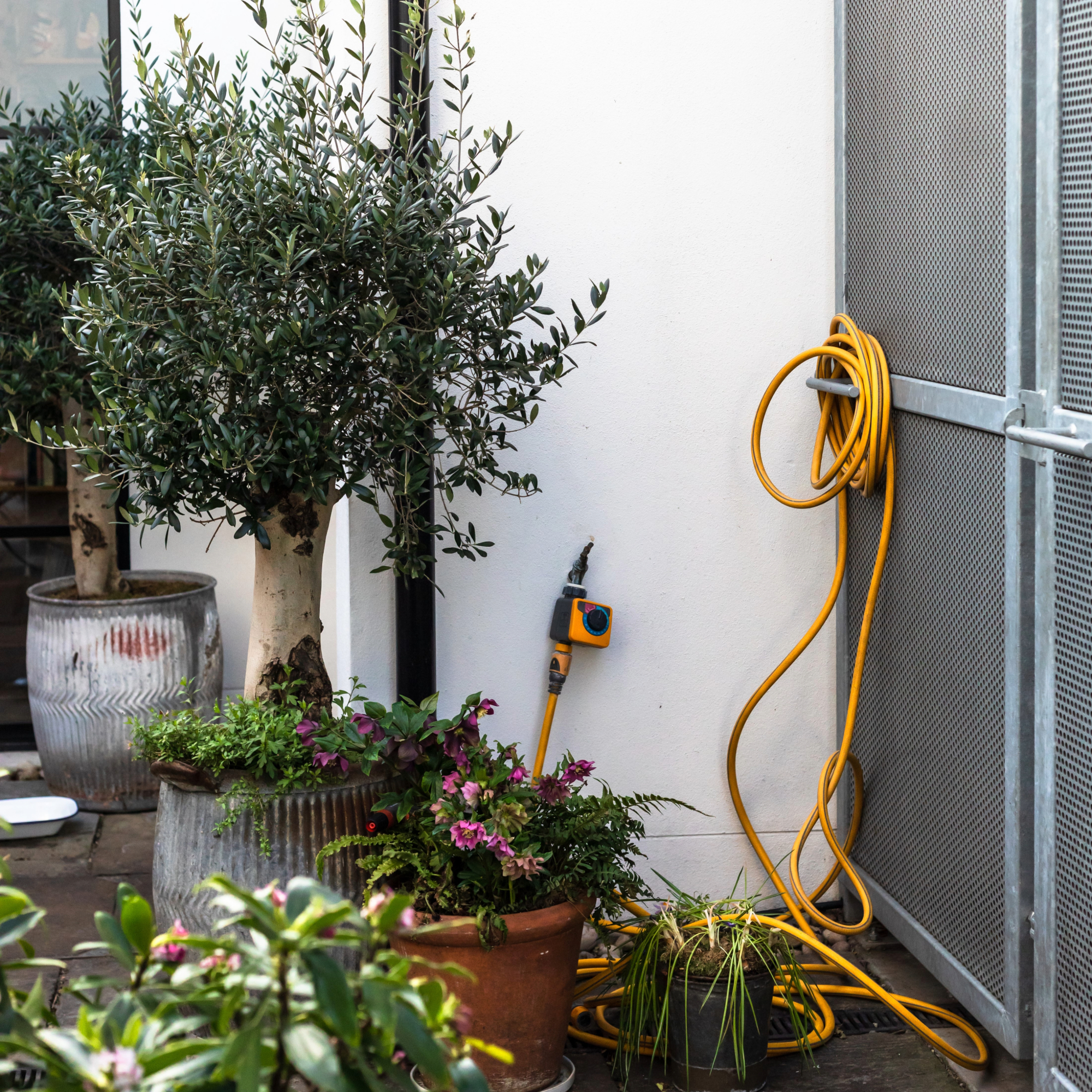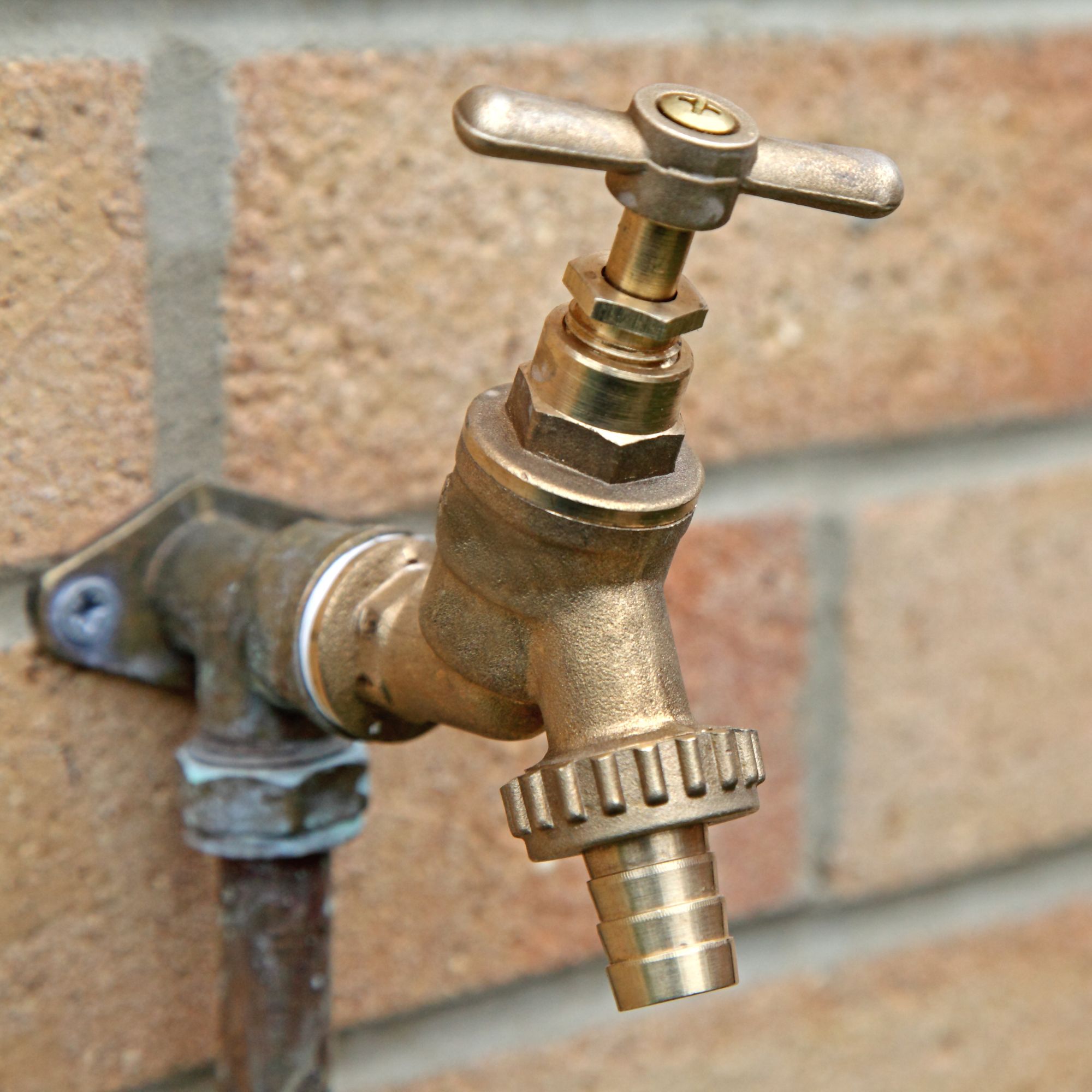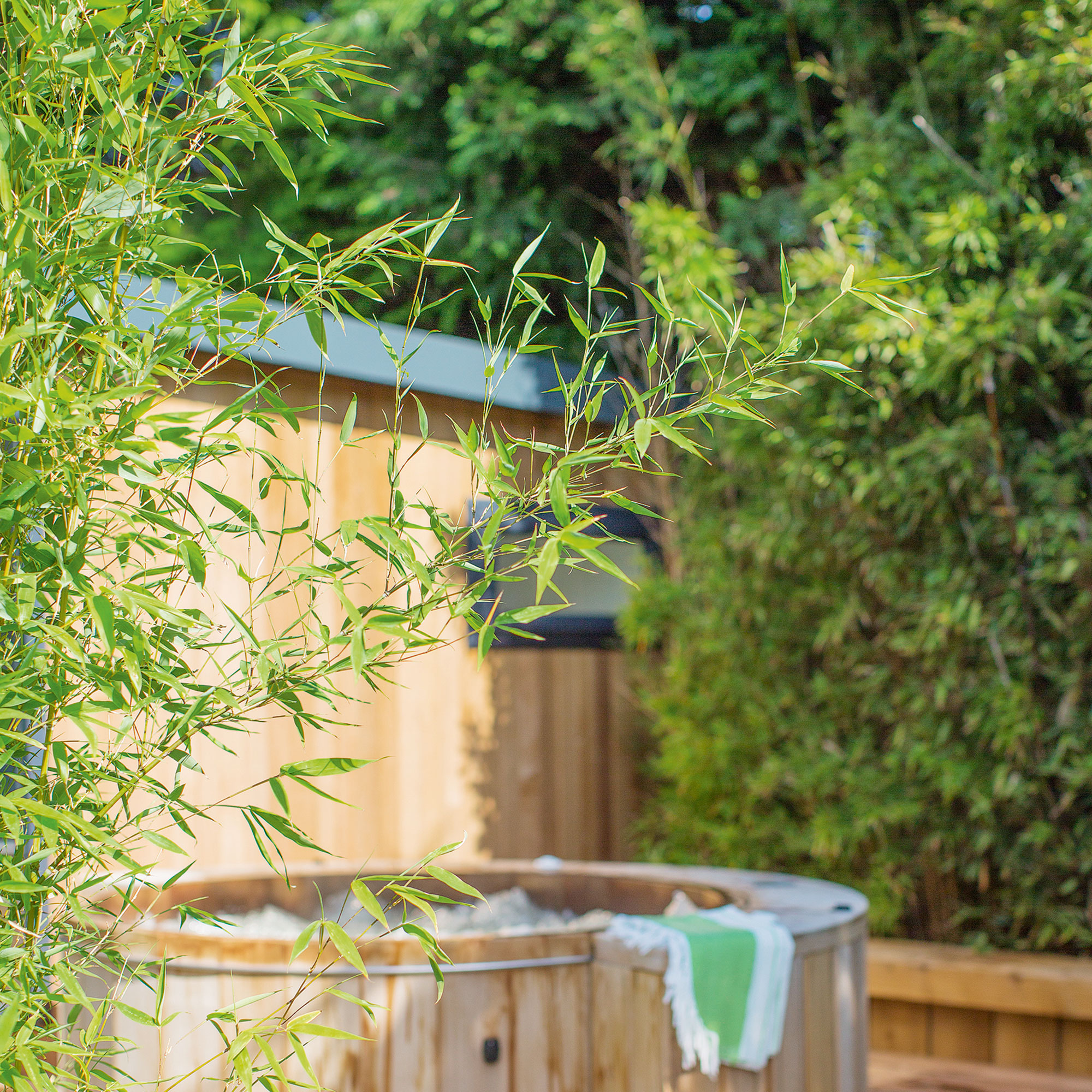How to install an outdoor hot water tap for cleaning your patio, washing the dog, or filling the paddling pool
Want hot water on tap outdoors? This is everything you need to know


Having an outdoor tap makes life so much easier. And while cold outdoor taps will never go out of style, sometimes you just need something a little warmer. Thankfully, this isn’t beyond the realm of possibility - as long as you know how to install an outdoor hot water tap.
Yes, if you’re looking to make cleaning your patio easier or add a wash station to your outdoor kitchen ideas, adding an outdoor hot water tap into the mix can certainly help you out. As Sean Lade, Managing Director of Easy Garden Irrigation says, ‘Outdoor hot water taps offer numerous benefits, so it’s easy to see why homeowners would consider installing one.’
But you can’t just buy a tap from the shop and consider it installed. This process can be extremely delicate and requires precise movements, which is why we’ve consulted with the experts and put together this step-by-step guide on how to install an outdoor tap.

Sean is the managing director of Easy Garden Irrigation, which creates a variety of irrigation and watering systems to make gardening effortless. Sean’s 14+ years in gardening and irrigation combine a passion for bringing solutions and drive for sustainability to UK gardeners all year round.
What you'll need
- Outdoor hot water tap - like this Garden Outside Tap Kit With Brass Wall Plate from B&Q.
- Insulated piping or pipe insulation - like this Climaflex Pipe Insulation from B&Q.
- Sealant - like this Gorilla All Conditions Sealant Silicone from Amazon.
- Drill - like this Black + Decker Cordless Hammer Drill with Battery from Argos.
- T-joint - like this Plumbsure Brass Compression Equal Tee from B&Q.
- Isolation valve - like this 15mm Lever Valve from Amazon.
Step-by-step

1. Consider your DIY skills
Although installing an outdoor hot water tap sounds easy, the average DIYer probably shouldn’t do it alone. After all, it requires a fair amount of plumbing knowledge.
Jess Thomas at Drainage Central warns, ‘I highly recommend that you hire a professional to complete this task. If done incorrectly, it can lead to serious burns, as well as damage to your home's pipe and water system.’
However, if you have the expertise and knowledge to do it yourself, you can cut down on the cost of paying someone else to do it. Just remember that if you do decide to install an outdoor hot water tap yourself, you do so at your own risk.
2. Determine the optimal location
No matter whether you’re paying a professional or doing it yourself, choosing the location for your outdoor hot water tap is key.
Sign up to our newsletter for style inspiration, real homes, project and garden advice and shopping know-how
Sean, says, ‘Determine the optimal location to minimise pipe runs, so ideally close to an existing hot water source.’
When doing this, it’s also important to consider ease of access - not only when it comes to using the outdoor hot water tap but also in terms of maintenance.
Then, to avoid plumbing disasters, you should always turn off the main water supply before doing anything else.

3. Install the hot water pipe
With the main water turned off, you can then turn your attention to the pipe connecting the hot water supply to the outside tap. This is a messy step, and it also requires drilling through a wall, so double-check that you’re happy with the location.
Once you’re ready to go, Jess advises to, ‘Drill a pipe-sized hole through the wall. Then, connect the new pipe to the existing hot water supply. You will likely need a T-joint or something similar here.’
However, it’s important to use the right tools for the job here, too. Sean adds, ‘Ensure you use insulated piping to prevent heat loss and protect against freezing temperatures.’
And when you’ve installed the insulated pipe, you can then use a high-quality sealant to seal around the pipe where it comes through the wall. This will prevent any leaks.
To finish this step, Jess also urges DIYers to, ‘Install an isolation valve on the pipe inside the house. This will allow you to turn the outdoor hot water tap off without disturbing the inside water pipes.’
4. Mount the tap on the exterior wall
Of course, there’s no point installing the pipes for an outdoor hot water tap if you don’t have the actual tap to go with it. So, next, you should mount the tap on the exterior wall.
Jess says, ‘You will likely need wall screws and fixtures to secure it,’ but it may be that the outdoor tap you buy comes with the fixings required. Always double-check before buying, though.
You can then turn the water back on and test the outdoor water tap. Just be warned that it may take a few seconds for the hot water to come through, and always keep an eye out for any leaks.
Sean also advises, ‘It’s best to consult a professional plumber to ensure compliance with local plumbing codes and to guarantee a safe, efficient installation.’

5. If in doubt, opt for an easier alternative
If the above seems outside of your DIY remit, you don’t have your landlord’s permission to install a hot water tap, or you just don’t have the budget to splurge on one, there is an easier and much more affordable alternative you could consider.
Sean says, ‘Connecting a garden hose to a kitchen tap is an effective alternative that will provide outdoor access to hot water, without the installation costs. Simply use a hose connector designed to fit your kitchen tap, ensuring a secure and leak-free connection.’
He also adds, ‘My personal favourite is the Quick-Fit Indoor Tap Connector by Claber from Amazon. It’s an elegant solution that makes your garden tap ready to connect a garden hose quick and easy.’
Why you should install an outdoor hot water tap
Although outdoor hot water taps aren’t as common as cold water outdoor taps, there’s no denying that they have their perks. So, here are the many ways that you can use an outdoor hot water tap at home:
For cleaning: When it comes to cleaning, hot water is always more effective than cold. And no matter whether you’re cleaning your garden tools or your car, an outdoor hot water tap can help you out. ‘Cleaning outdoor furniture, driveways, and patios can also benefit from warm water instead of cold,’ adds Jess.
For washing dogs: As the owner of a dog obsessed with water/puddles/giant bowls of mud, the idea of washing my dog in the garden with hot water is genius. For starters, it will keep the house free of mucky paws, and Sean explains, ‘It can manage the mess outdoors, keeping the indoor bathroom clean and free from fur and dirt - which is better for indoor drains.’ Plus, it’s just more enjoyable for everyone (and every dog) involved.
For summer activities: Whether you have one of the best hot tubs or you want to fill up the kids’ paddling pool, using water from an outdoor hot water tap can certainly work in your favour. Not only will the warm water be more comfortable for children, but adding hot water into a hot tub can also cut down the time it takes to heat up - ultimately reducing how much it costs to run a hot tub.

FAQs
How much to install a hot water tap outside?
Generally, you should expect to pay anywhere between £80-£200 to install a hot water tap installed. This should include the cost of materials and the price of labour for a professional to fit it.
Of course, this also depends on where you want your outdoor hot water tap installed and the price of materials at the time. If there are complications, this can also cause the cost to rise.
Do you need a special garden hose for hot water?
Once you’ve installed an outdoor tap, you can simply attach a hose to use it around the garden. It’s important to check the specifications of this garden hose, though, as some thin garden hoses will not be suitable for hot water.
And while you may not necessarily need a special hose for hot water, we’d always suggest buying one that can be used in these circumstances just to be on the safe side.
So, will you be installing an outdoor hot water tap in your garden?

Lauren Bradbury has been the Content Editor for the House Manual section since January 2025 but worked with the team as a freelancer for a year and a half before that. She graduated with a Bachelor’s degree in English and Creative Writing from the University of Chichester in 2016. Then, she dipped her toe into the world of content writing, primarily focusing on home content. After years of agency work, she decided to take the plunge and become a full-time freelancer for online publications, including Real Homes and Ideal Home, before taking on this permanent role. Now, she spends her days searching for the best decluttering and cleaning hacks and creating handy how-to guides for homeowners and renters alike, as well as testing vacuums as part of her role as the Ideal Home Certified Expert in Training on Vacuums, having spent over 110 hours testing different vacuum models to date!